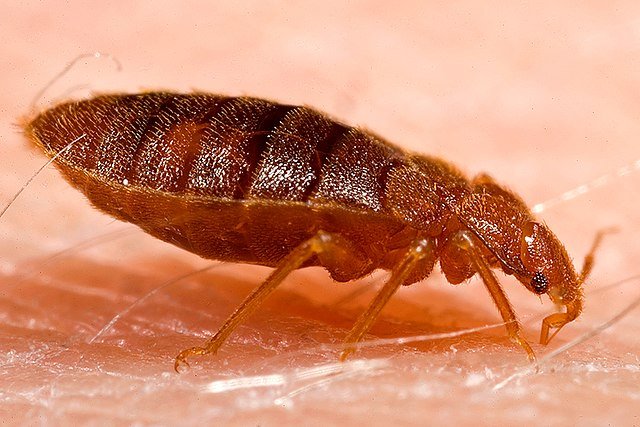Rat Infestation Control: The Will, the 100 Rats, and the Stomach of a Professional
The Phone Call
 Rat infestation control cases often start with unexpected calls. One day long ago, I received a call from a client who said he had a serious rodent problem in a property. Since we handle rat infestations, I began asking my standard questions to understand the issue.
Rat infestation control cases often start with unexpected calls. One day long ago, I received a call from a client who said he had a serious rodent problem in a property. Since we handle rat infestations, I began asking my standard questions to understand the issue.
Within seconds, he said:
“The problem is massive. You've never seen anything like it. Whoever shows up needs experience and a strong stomach.”
Of course, I’ve heard things like this a thousand times before. They're often exaggerations. Besides, those of us who’ve committed to this profession long-term—we’ve got the stomach for it.
He explained that the door had been broken at some point, no one knew exactly when, and in the meantime, rats had filled the place. They wanted them gone as soon as possible, everything removed, the space disinfected, and restored to a clean state.
I briefly thought they’d watched too many movies—but I kept that to myself. Never laugh. Every client must be taken seriously.
“Understood,” I said. “We’ll need to install bait stations and traps, and then we’ll see how to proceed. Once I visit and inspect the space, I’ll know more.”
And so we scheduled the appointment.
The First Visit
On the day of the appointment, I arrived early. It was in a central area—no parking anywhere. My nerves were already stretched. I finally parked far away. I was carrying rodenticide, my toolbox, a bag full of bait stations and snap traps, disposable coveralls, masks, etc.
I met the client. He greeted me wearing kitchen gloves and rubber boots. Fortunately, I had brought my white boots.
“Hi,” I said. “Shall we head upstairs?”
“Are you sure?” he asked. “Things are really bad.”
I wanted to smirk but kept a straight face. Who did he think he was warning? We do rat infestation control every day. I was already in my suit and boots. I confidently signaled him to open the door.
The Shock
As soon as he opened it, a wave of stench hit me—unbearable. A combination of mold, urine, vomit, and pure hell. I immediately grew serious. I pulled a pro filtered mask from the bag and put it on before even reaching the top of the stairs.
Cautiously, I went up and reached the first floor. My eyes immediately caught the broken door, split in the middle. Oddly, the client was only wearing a basic surgical mask. I began to admire his ability to withstand the smell.
“This is it,” he said.
I motioned for him to wait and proceeded to inspect the rooms.
The Chaos
What could I inspect? Rats darted everywhere—I could hear them running past me. The thieves had overturned everything and left behind mountains of clothes, belongings, trash. Perfect hiding places. Everything was infested.
Droppings everywhere, definitely urine everywhere. Everything chewed and contaminated. The filth was unimaginable. Each room was worse than the last. Noises, piles of shredded material, rats diving in and out.
The place was a ticking biological bomb.
After a quick survey of the four rooms, I stepped outside.
“Let’s talk downstairs where we can breathe,” I said.
The Professional Diagnosis of Rodent Problem
Inside, I was disturbed. Shocked. Angry at my fate. Furious at life. What the hell job had I chosen?
It became obvious they had likely been reported to the Health Authority and were now reacting.
“Look, the situation is far worse than you described,” I told him. “There are so many items inside that—even if we kill all the rats—we’d need to send in five people in full suits, disinfect each item before bagging it. We'd fill two dumpsters. Then we’d need a deep clean before the actual disinfection. Otherwise, it’s pointless. This is the only way for proper rat infestation control”
“But,” he said, “I can’t let you throw everything away. I need to search for a paper—the will.”
I found myself staring at him, dumbfounded. I understood his priority: the inheritance. But all I could think was that if he entered the space—with just a surgical mask and kitchen gloves—and anything went wrong, he could die of leptospirosis or bacterial infection.
The Start of the Rat Control Project
I pushed those thoughts away. I’ll admit—part of me wanted to walk away from the job. So I quoted him a high price—especially for Greece. He winced, but agreed.
Inside, I didn’t like it. But I was a professional. I had to carry on.
Let’s clarify: we weren’t talking about small mice. These were rats. Big-bodied, thick-tailed, pointy-headed, aggressive when cornered. They reproduce every 3–4 weeks with litters of 6–12. If they find food and shelter, they can multiply explosively and colonize a space in under two months.
The First Intervention
From the smell and activity, I estimated over 100 rats in the 75m² apartment.
I devised a straightforward, proven strategy: one bait station every 5 meters, loaded with a highly attractive paste-based rodenticide. I’d return in 5 days.
Since the property was uninhabited, I placed warning signs and restricted entry. I chose five days to allow rats—who fear new objects—to become comfortable with the bait.
I placed around 15 rat bait stations, disinfected my boots, set stations at room corners. I used a long pole to bang the floor and scare them off before I reached each trap spot. It worked.
Once traps were placed, I removed my suit, bagged it, and disposed of it. I disinfected my boots, took a few breaths, and briefed him: We’d need at least 4–5 visits, spaced every five days. Forget about finding the will in a week or two.
Follow-Up Visits
Five days later, I returned—with a long grabber to collect dead rats for disposal via certified bio-waste companies.
The stench had worsened due to decomposition. It was nightmarish.
I opened the bait stations. All the bait was eaten. I reloaded every one. I could still see rats running around. No corpses in plain view—or maybe I didn’t want to see them.
I repeated this for 3–4 more visits until the bait remained untouched. That meant they were finally gone.
The Twist
I went downstairs to explain the next phase: cleaning, disinfection, waste removal. But I was wrong.
He said:
“Look, I’m just glad there are no live rats now. But I won’t let you throw anything away until I find the will. I’ll go in and search everything, piece by piece.”
I was furious. Speechless. Then philosophical: money overrides all logic.
He was about to crawl through filth, dead rats, feces, trash, urine—to find a paper.
Still, he was a big boy. I had other clients. I told him the remaining balance, sent PPE guidelines, emailed him a legal warning about biohazards of rat infestations and protection protocols—and left him to it.
The Return
Months passed. I’d forgotten him. He called again for pathogen disinfection.
“What happened to the trash and the rats?” I asked.
“I found the will. Then I waited a couple months for the rats to decompose and bagged everything up myself.”
That was improper—rat remains must be incinerated or buried via approved methods from an authorised waste management company, or handled in accordance with the specific biohazard disposal guidelines provided by the local municipality or state. I let it slide. I felt relieved.
I asked if it had been cleaned.
“Yes, bleached everywhere. But I want something extra.”
I visited again with a fogging machine and did a ULV disinfection to reach every crevice. Since I hadn’t handled the cleanup, I couldn’t certify the disinfection—but I sent him a note explaining my reservations.
The Final Request
A month later, he called again. He had to present the will to the notary and wanted it disinfected.
I didn’t understand why he waited so long or how he thought this worked. He never communicated clearly. He didn’t follow instructions. He did his own thing.
Honestly, I don’t know why he even hired me in the first place.
Still, I accepted. The paper was in a plastic sleeve. I used tweezers to expose it to UVC light for DNA disruption of surface bacteria. I returned it with a written note:
“This document was exposed to UV-C radiation for limited surface microbial load reduction. This does not constitute a certified disinfection method under current health protocols.”
I advised him to take high-quality photos of it and avoid removing it from the sleeve. The notary, it turned out, didn’t care—he accepted it as-is.
What more could I do?
Epilogue
I haven’t heard from him since.
I hope he’s alive. I hope the notary’s alive. I hope everyone made it out of that story in one piece.
But here’s the real takeaway:
When you hire a professional, listen to them.
Even the worst technician is a hundred times better than someone doing it for the first time—especially when your health is on the line.
And just like that… another rat control horror story comes to an end.
Suspicions and Afterthoughts
Let’s offer some takeaways for prevention.
They didn’t know the house had been broken into. An aunt had lived there. She spent her final six months in the hospital. By the time funerals were done and someone visited the home, nearly a year had passed.
I asked around. Apparently, some caregivers looked after her before she died. My suspicions leaned in that direction—but I kept quiet. The police couldn’t determine when the break-in occurred.
Based on my inspection, I estimated the rats had been inside for 3–6 months. That’s how long it would take for them to multiply and overrun the place.
Most likely, whoever broke in knew the woman was hospitalized or had already died. When they figured it out, we’ll never know.
The rats entered through the broken door, using the stairwell. On one visit, I found a broken window pane on the rooftop door—another possible entry.
There’s always an explanation.
DIY Legal Rat Infestation Control Tips
If you're dealing with a smaller issue and want to handle it yourself (and stay legal), here are some steps:
Block Access
Seal all cracks and holes with steel wool or hardware cloth.
Close vents and pipes using proper mesh or screening.
Remove Food Sources
Store all food in metal or heavy-duty plastic containers.
Clean dishes, countertops, and floors immediately after use to eliminate crumbs or spills.
Use Only Legal Products
Use only approved rodenticides (check your local regulations).
In countries like the US and UK, rodenticides sold to the general public must be pre-packaged in tamper-resistant bait stations and contain only low-toxicity, approved formulations.
It is illegal for unlicensed individuals to use professional-strength rodenticides or place poison in open areas.
Always read and follow the product label, and never attempt bulk baiting or outdoor use unless you are properly licensed.
Snap traps should be placed along baseboards, behind furniture, and other rodent pathways.
Protect Yourself
Wear disposable gloves, N95 mask or higher, and protective coveralls when handling traps or cleaning.
Disinfect your hands, equipment, and clothing after handling rodents or contaminated items.
Dispose Correctly
Double-bag all carcasses and dispose of them according to your municipal waste guidelines.
Do not burn or bury rodents unless it is legally permitted in your area.
Know When to Call a Pro
Strong odors, visible rats, or repeated droppings are clear signs of an active infestation.
If there’s no improvement after 1–2 weeks of DIY efforts, it’s time to call a licensed pest control professional.
Disclaimer
This article is for informational purposes only. Pest control laws and approved chemicals vary by country. For best results and legal safety, we strongly recommend contacting a licensed pest control professional in your local area. Always make sure that the pest control technician is properly certified or licensed, depending on your country’s regulations. It’s important to confirm that they only use approved products and apply them exactly as instructed on the product label. In most places in Europe, UK, or USA, following label directions is not just best practice—it’s the law.
Written by:
Nasos Iliopoulos, MSc Agronomist & Certified Pest Control Expert.
Scientific Director, Advance Services (Athens, Greece) Licensed Pest Control Business – Ministry of Rural Development & Food (GR)

